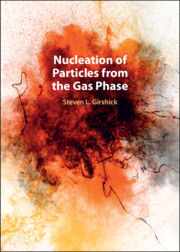A promising candidate to initiate dust formation in oxygen-rich AGB stars is alumina (Al2O3) showing an emission feature around ∼13μm attributed to Al−O stretching and bending modes (Posch+99,Sloan+03). The counterpart to alumina in carbon-rich AGB atmospheres is the highly refractory silicon carbide (SiC) showing a characteristic feature around 11.3μm (Treffers74). Alumina and SiC grains are thought to represent the first condensates to emerge in AGB stellar atmospheres. We follow a bottom-up approach, starting with the smallest stoichiometric clusters (i.e. Al4O6, Si2C2), successively building up larger-sized clusters. We present new results of quantum-mechanical structure calculations of (Al2O3)n, n = 1−10 and (SiC)n clusters with n = 1−16, including potential energies, rotational constants, and structure-specific vibrational spectra. We demonstrate the energetic viability of homogeneous nucleation scenarios where monomers (Al2O3 and SiC) or dimers (Al4O6 and Si2C2) are successively added. We find significant differences between our quantum theory based results and nanoparticle properties derived from (classical) nucleation theory.


